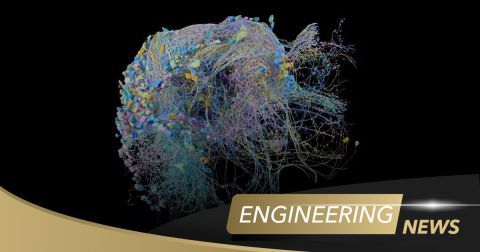Quantum Computing Electronics vs. Photonics: New Chips Will Shift the Balance

How would you like to access scalable, Python-programmable quantum computing resources through the cloud? Canadian startup Xanadu recently announced a chip that enables this type of accessibility in quantum computing. What’s more interesting is how this type of chip will fit into the quantum computing ecosystem and how it leverages photonics as for manipulating qubits in a quantum computer.
Although 2021 is gearing up to be the year of AI, quantum advances are still making headlines, just like they did in 2020. On March 8, 2021, Phys.org reported that Canadian startup Xanadu and the US National Institute of Standards and Technology (NIST) have announced a new programmable chip for executing multiple quantum algorithms. The report follows a groundbreaking publication in Nature, where the authors report their chip can operate at room temperature. This chip is unique from prior advances in quantum computing we’ve reported on this blog, where RF signals or lasers are used to manipulate qubits in a large cryogenically-cooled system.
Xanadu’s chip is unique in that it operates with photons, or light, at optical wavelengths. In quantum computing, superconducting qubits and trapped-ion qubits have been winning the day, and these computing architectures are used in the typically large quantum computers. This new advance from Xanadu marks a new win in the photonics portfolio, and it remains to be seen whether this will become the new standard for quantum computing hardware.
Photonics Exhibits Quantum Advantage
This new chip is unique in terms of its physical size, how it functions, and how it can be integrated into a larger quantum IC or processor. We’re starting to see quantum ICs following the same progression of scaling and integration that electronic ICs experienced over the past 50 years. A schematic showing the architecture of Xanadu’s processor is shown below. This chip is fully photonic; pump light (input data) is given to the circuit using fiber through an I/O coupler. The output from the chip can then be read-out from an output coupler and sent to a supercooled detector.

The architecture shown above uses ring resonator cavities at the input to trap photons in highly coherent quantum states, known as “squeezed” states, which are stored at room temperature. Mid-way between the inputs and outputs, beam splitters and phase shifters are linked with waveguides to create programmable quantum interferometers. This is what enables programmable mixing of states as input photons propagate to the output. Finally, a classical electronic control module is used to receive user input and configure each beam splitter and phase shifter in the array.

Advantages
This architecture is very powerful and provides several advantages over trapped ion qubits and superconducting qubits:
- Many-photon operation: The current incarnation receives data from fiber, but the bus width could be extended to give one or more parallel data streams.
- Low loss: The ring resonator structure and waveguide structure naturally confines light thanks to total internal reflection. This is a big advantage over other competitive quantum computers, which are very lossy.
- Room temperature: Quantum computers running with superconducting qubits and trapped-ion qubits must run at cryogenic temperatures. This is partially to prevent decoherence (loss of a qubit’s quantum state) and partially to ensure interconnects and the qubits remain superconducting/trapped. Being able to run at room temperature removes the need for complex cooling systems or precise laser cooling setups to ensure qubit states are not lost.
- Programmable: The device has a simple architecture that can be configured with a Python library. This is a big advantage for scalability and integration; I’ll discuss this more below.
- Highly scalable: One of the major limiting factors in standard quantum computers, such as those based on microwave resonator cavities with trapped ions, is their scalability. Building everything on a planar chip makes these devices much more scalable, and possibly allows them to be integrated into standard IC architectures (2D, 2.5D, or 3D).
- Silicon platform: Using silicon as a photonics platform aids scaling as these chips could be implemented in a CMOS process. Integration of light sources and detectors on-die remains challenging, and integration onto a board may require unique interconnect styles to supply and collect light.
Note that only the chip runs at room temperature; the detector and readout side of the system still runs at supercooled temperature, but the system is a step in the right direction. The more important aspect of this system is that its scalability can, in theory, enable quantum advantage.
Quantum Advantage
The term “quantum advantage” simply means that a certain quantum computer is capable of performing calculations that are intractable with a classical computer. The ability to perform computations with multiple inputs and outputs in parallel not only makes the system scalable, it does enable quantum advantage. As the number of input ports increases, so does the number of possible states, which would increase the amount of time a classical computer would require to simulate all possible values at the output ports.
“Hello World!” on the Quantum Cloud
This new quantum processor is now available for public access on Xanadu’s cloud platform, and developers can deploy their own quantum algorithms using PennyLane, the company’s Python library for quantum computing development. This is another step in the right direction for scalable, general-purpose quantum computing: development of a software stack to build quantum applications in popular programming languages.
If you want to deploy your own program on Xanadu’s cloud, you’ll have to request access. Assuming you have access, you can use their library with the following code block to run your first quantum algorithm:
|
|
So what does it mean for PCB designers? If we want to build small, lightweight systems with quantum processors, we can’t have big light sources and detectors on the board just to interface with a quantum chip. Getting the system size smaller, and down to the point where a quantum processor can be put on a PCB, requires integrating light sources and detectors for these systems down to the die level.
Now with these capabilities being accessible in the cloud, imagine being able to have an embedded device that sends data to a cloud-connector quantum computer as part of a larger application. The possibilities are mind-boggling, and we can only hope Xanadu’s architecture makes its way to the device level.
As new technologies become prominent and widely available to the electronics community, Altium will be here to help innovative engineers build electronics that push the limits of technology. As the electronics industry starts to see commercialized quantum computing solutions, you’ll be able to design around these with Altium Designer® and the Altium 365™ platform. Keep watching the blog for more engineering and technology updates.










